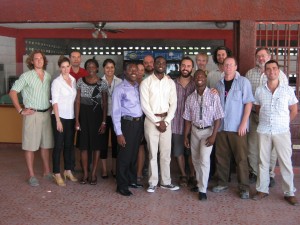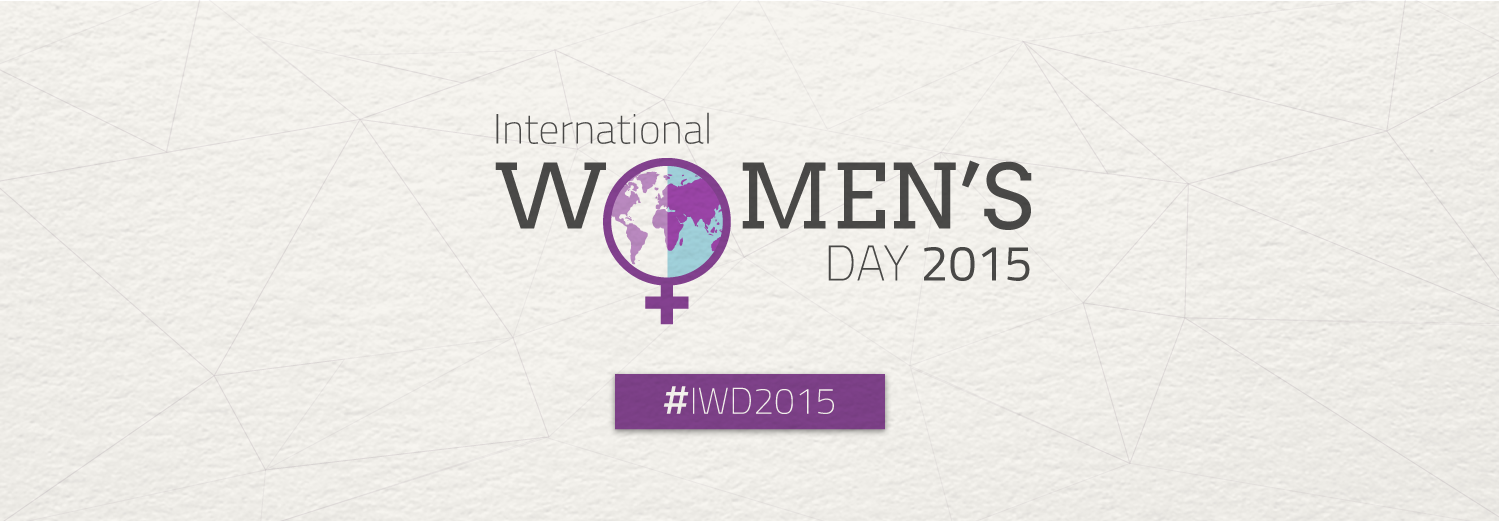The most recent issue of “Building Peace,” a publication of the Alliance for Peacebuilding, on #PeaceTech doesn’t dwell on “what” is being built in technology for peace, but rather examining “how” the peacetech space is operating. And that’s a good thing. The authors in this issue approach the subject as a good engineer should: Disassemble, understand its components, make adjustments, and reassemble. The messy poking about that comes with such new territory is an indication of progress, not confusion.
“Peace technology” is perhaps best described in this issue “a fundamentally mediating technology–it acts as an intervening agent, augmenting our ability to engage positively with others” (p.14). The authors from the Stanford Peace Innovation Lab propose four subcomponents working in unison: Sensors, communications, computation, and actuators. Once unique and expensive, the average smartphone contains several of each of these subcomponents, thus speeding the process between a user observing harmful human engagement and coordinating an appropriate response.
But the unequal distribution of peacetech creates new challenges. Ann Mei Chang, the executive director of the Global Development Lab at USAID writes that: “Today, only 40 percent of the world’s population is online….those who do not have Internet access are disproportionately poor, rural, older, and female.” (27). The importance of these “missing voices” is highlighted by authors such as such as Olanike Olugboji in Nigeria with WISE, who has engaged over 3,000 women in activities including digital empowerment; as well as by Lawrence Oduma in addressing youth employment in rural Zimbabwe with the AFSC.
The infrastructure underpinning this rapid expansion is creating broader opportunities as well. In Afghanistan, Jes Kaliebe Petersen of Paywast describes how the rapid growth of phone subscribers and Internet users has created a “burgeoning tech ecosystem of software developers, startups, community organizations, and government support.” (25) These expanding networks are challenging existing hierarchies, according to Margot Wallström, where “the power of actors to effect change increasingly depends on the number of connections they have rather than the name of their institution.” (35)
But the information from these networks may be having an even greater effect outside of conflict zones. Wallström points out how “technology is now making information flow from places that previously were blank spots on the mental map of policymakers. We can no longer say ‘we did not know.’” (37) Caroline Donnelan points out that the full extent of casualties attributable to warfare by “remote control” through reliance on drones and private military and security companies (PMSCs) “ is often not factored into the equation, leading to the creation of “an effective recruitment tool for extremists, fueling rather than minimalizing radicalization.” (32) In contrast, Jessie Mooberry describes her experience with the Syria Airlift Project to deliver medicine, water, food, and water purification technology to “diminish the power of those terrorizing innocent populations.” (30)
The enthusiasm for technology solutions becomes more problematic at this point. Despite the good intentions of the authors, the reader cannot help but wonder: Do these actors have any idea what they are doing in a war zone?
Fortunately, the publication provides context as well as case studies. In the earlier definition of peacetech by the Stanford team, the authors call attention to the possibility of harm through omission, commission, or unintended consequence. (15) Ivan Sigal describes just such a case of unintended consequence in the arrest and prosecution of Zone 9, a group of Ethiopian bloggers and journalists dedicated to a more inclusive and democratic country. Sigal describes how the evidence against them (and reason for being charged with criminal intent), “was that they had received training in the use of digital security and encryption tools from the Tactical Technology Collective.” (41)
More caution is necessary when introducing technical solutions, which often come with their own agenda. Charles Martin-Shields [Disclosure: A colleague from USIP and TechChange] calls attention to the fact that “ICT’s are commercial products, and the ways people use them are as much a function of regulatory rules as of personal preferences.” (34) Locally driven approaches, such as those emerging from the burgeoning tech scene in Kenya, may have better results. Jen Welch continues this theme by describing successful digital games for peace, including one developed in Kenya as a response to election violence. (44)
The importance of context and regulatory environments applies to the Internet itself. Paul Mitchell and M-H. Carolyn Nguyen who claim that “while messy and chaotic–like democracy itself–the Internet’s multi-stakeholder governance model has resulted in astonishing achievements globally.” (40) Embracing this multi-stakeholder approach is central to Sheldon Himelfarb’s initiative behind the PeaceTech Lab, where “technologists and peacebuilders can work shoulder to shoulder every day” (13) [Disclosure: Himelfarb is a former colleague from USIP]. In doing so, it nicely ties together the need to bridge online possibilities with real-world human connections.
The articles in this issue that emphasized these real-world human connections were welcome additions. Soha Frem of the Common Space Initiative (CSI) describes the importance of creating a space for informal, yet structured, dialogue between Lebanon’s primary stakeholders.” (18) By thinking about office space, table design, and photographs in just one room, the hope is to begin to undo the segregation of Lebanon’s civil war, which is a catalyst for greater conflict. Miguel Lago and Courtney Crumpler of Meu Rio address global problems of climate change, energy usage, and poverty, by first focusing on the urban problems in Rio de Janeiro. It’s this drive towards coordinating offline action through such “Summer of Sanitation” initiatives, that helps citizens who lack human security find that “working together for change can be uplifting and empowering.” (22)
In these respects, it becomes clear that peacetech is not about technology or peace at all, but rather about empowerment of local actors to create a better world for themselves peacefully. Perhaps my favorite example from my work with TechChange came from an interview with Prashan De Visser, the President and Founder of Global Unites. [Disclosure: I’m now on the Executive Board for the organization]. During a webinar for our course with the IREX exchange students with Global UGRAD-Pakistan, Prashan recounted his efforts with social media, fundraising from international donors, messaging for earned media, and connecting youth leaders in Sri Lanka with a global community.
I asked him how these tech tools helped him with helping post-war counter-radicalization efforts. His response was simple:
“The technology just helps us create a space to make real progress for reconciliation. it’s just a tool , an important one, but youth leaders on the ground intercepting youth from extremist voices is where the real effort is at. The difference at the end of the day is our commitment to go beyond social media and be in the lives of these youth, who are desperately in need of an alternate voice to radicalziation. Our online presence then becomes an extended expression of our work and commitment to broader community.”




